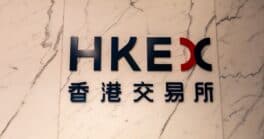For banks to compete and flourish, Gareth Richardson, chief operating officer of Thought Machine, explains why cloud-native technology is key.

Global Finance: Has the cloud solved core technology problems for banks, and will it ultimately enable the replacement of legacy mainframes?
Gareth Richardson: The key features of legacy systems—including hard-wired products, legacy development and release processes, and offline batch processes—are the root cause of why traditional banks have been unable to meet customers’ changing expectations and compete with new entrants.
The cloud has now shown that banks can be faster, more efficient and nimbler. That allows them to respond quicker to market developments, regulatory changes and new customer demands. It’s no longer a question of “if” banks will move to the cloud but a matter of when and how. Banks know that in order to compete with new market entrants, moving to the cloud is the only answer.
This is why some of the world’s biggest banks, such as JPMorgan Chase in the US, Intesa Sanpaolo in Europe and Standard Chartered in Asia Pacific are now adopting cloud-native technologies to compete and flourish for the long term. More banks will make the move—or at least, those that don’t want to risk becoming obsolete.
GF: How can banks adapt their business models and existing products to enable innovation?
Richardson: Many of today’s banks still run on closed-box, legacy systems, which inhibits them from being able to adapt to changing market conditions. These systems restrict configurability and simply do not allow banks to build innovative products. Although many banks have developed polished, new front-facing customer channels in recent years, only by moving away from an outdated, monolithic infrastructure will institutions be able to transform product development and deliver genuine innovation.
There are different approaches that traditional banks can take to achieve this. One solution is to launch a digital greenfield where a bank launches a completely separate customer proposition on an entirely new technology stack. This approach, taken by our client Standard Chartered with Mox Bank in Hong Kong, allows the bank to build, test and deliver a range of sophisticated products running on a modern core.
Other approaches include adopting a coexistence approach or undertaking a migration. This approach allows a bank to, over time, migrate customers to a modern, cloud-native platform like Vault Core, with the bank being able to test the new core alongside legacy platforms. We are working with banks undertaking transformations of all kinds. The key point for them is getting the right technology stack in place that will allow them to build new products and gain market share.
GF: What is Thought Machine’s secret to solving complexity and connectivity issues?
Richardson: Banks running legacy systems struggle to make changes to products or accounts en masse. To configure a new feature, or change a term on an existing product, is a highly complex process.
What differentiates Vault Core from other core banking platforms is our approach to product configurability, which significantly reduces the time and effort it takes for a bank to build innovative products. Through the use of smart contracts, we give banks the tools to customize our prebuilt products to suit customers’ specific needs or write innovative products completely from scratch. As an example, by running on Vault Core, Mox Bank was able to launch a product with a “flip” feature, allowing customers to seamlessly switch between debit and credit spending—significantly enhancing the user experience and removing all complexity from the customer journey.
Typically, financial institutions have independent systems running individual business lines, with no system talking to each other. Moving money from a deposit product to pay off a credit product is a full money movement between systems—it can’t be automated or seamless to a customer. This also means the bank has to wait sometimes days to understand the true position of a customer, as the individual feeds don’t reconcile until all business processes have run.
Vault Core allows you to run all products on a single core in real time, reducing complexity significantly. As a result, the bank and the customer know exactly where they are in real time—improving customer experience through real-time personalization, but also improving core bank needs such as liquidity and risk management. Running a single core reduces operational costs by upward of 50% in some cases.
In terms of connectivity, our microservices architecture allows banks to scale when needed. Crucially, this design also ensures that banks have zero downtime, with the end result being customers’ accounts or payments never being affected by outages.



